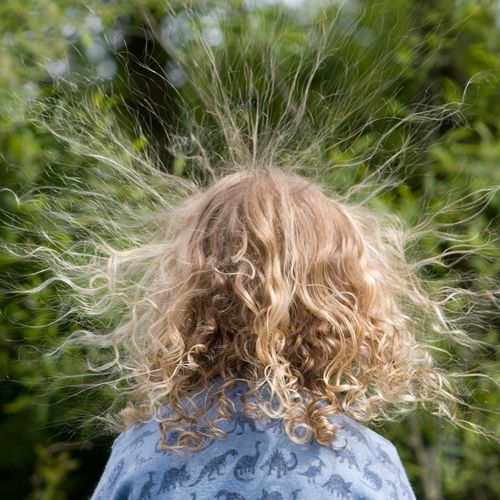My Cart
Your Shopping Cart is currently empty. Use Quick Order or Search to quickly add items to your order!
 Emmette Cox
Emmette Cox
Project Management Coordinator, Physical Science
September 2015
Static electricity. It’s fascinating. We’ve all experienced it. We know that an incredible amount of power occurs in the static discharge of a lightning bolt. Such 18th-century scientists as Ben Franklin and John Carl Wilcke, who studied static electricity and the new quantity “charge,” laid the foundation for later scientists to explore electric current and develop the technologies that now define our modern age, including power stations, electric lights, radio, TV, and telephones. Students need to understand the concepts involved in static electricity, yet science class typically includes few demonstrations of it. Turn your next lesson on static electricity into a lesson on the scientific method with this activity. All you need is tape plus a few other items from home or classroom (perhaps found in a basic static electricity kit).
Somewhere in your class or equipment room you probably have an electroscope. This simple device consists of a metal rod with 2 metal foil leaves at 1 end. It most likely has a glass case or is built into a flask. When you bring a charged object near the electroscope, the leaves separate due to an induced charge. Create a similar device with nothing more than 2 pieces of clear adhesive tape.
This activity is fairly safe; however, some experiments with electricity can generate large, dangerous voltages. It is not recommended to use this activity with equipment that generates or stores large amounts of electrical charge.

Two pieces of tape with a like charge repel each other.
Two pieces of tape with a different charge attract each other.
A charged object will attract 1 piece of tape and repel the other.
When both pieces of tape are pulled off the same table, they both pick up the same type of charge, but when the pieces of tape are pulled off the table together, then separated, they pick up an opposite charge. When you hang the pieces of tape from a table and bring a charged object near the 2 pieces of tape with different charges, 1 piece of tape is attracted to the object and the other is repelled.
Static electricity experiments work better with less humidity. Also, the tape may lose charge on its own or if it touches 1 of the charged objects. This experiment works best in dry conditions, and you may have to repeat Procedure 2 to re-charge the tape.
Charge is a property of matter, like mass or volume. A buildup of charge on 1 object is called static electricity. When 2 objects made from different materials are rubbed together, sometimes charge is transferred—1 object becomes positively charged and the other object becomes negatively charged. This is called the triboelectric effect. In 1757, John Carl Wilcke published a list called the triboelectric series that identified which materials gained a positive charge and which gained a negative charge. Try using the oppositely charged pieces of tape from procedure 2 and repeating procedure 3 with different materials to create a list of materials with like and opposite charges. According to the triboelectric series, a foam cup rubbed with wool picks up a negative charge, and nylon rubbed with vinyl picks up a positive charge. Can you use the sticky-tape electroscope to verify which objects have like and opposite charges? What other materials can you test?